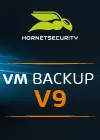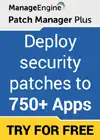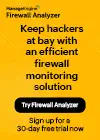Introduction to Cisco Unified Communication Manager Express (CallManager Express - CME)
We have been hearing about VoIP for many years now and while some have never worked with it, it has become today's standard in IP Communications and Private Branch Exchange (PBX) or telephony center solutions.
Popular vendors such as Siemens, Panasonic, Alcatel and many more who, until recently, did not offer VoIP solutions saw the new wave coming and produced solutions that would allow their systems to support VoIP. However, these 'hybrid' products are not pure VoIP and do not support expected VoIP PBX features such as SIP Trunking with global providers, codec selections, H.323 call signalling protocol and more.
While Cisco never produced analogue or digital PBXs (thank goodness!) they started off right with the latest technology, which is VoIP. Carrying decades of experience with the largest portion of the switching and routing market, Cisco Call Manager and Call Manager Express were born.
Cisco CallManager, now officially named 'Cisco Unified Communication Manager' or CUCM, is a server-based IP Telephony solution and currently Cisco's flagship VoIP product. Scalable to support thousands of IP Phones by clustering multiple CUCM servers together, it is the ultimate pure VoIP solution for enterprise customers.
Recognising the need to penetrate into smaller markets, Cisco came out with a smaller version, Cisco CallManager Express, also known as CCME or CME. The new offical name here is Cisco Unified Communication Manager Express (CUCME), however most people still call it by its older name, that is CCME.
Cisco CallManager Express (CME) is a fully capable IP Telephony solution able to handle from 24 Phones up to 450 Phones depending on the router model. Perhaps the best part of CME is that it runs on Cisco routers and does not require separate hardware as is the case for CME.
Assuming you have a Cisco router, running CME can be as simple as upgrading your IOS and possibly DRAM memory. From there on, depending on your requirements, you can configure and use it immediately or you might require an additional upgrade. CallManager Express is extremely flexible because it is modular.
Downloading CallManager Express and Identifying Different Versions
CME is a software based IP Telephony system embedded in the following more advanced Cisco IOS versions. The Cisco IOS new packages are as follows and the highlighted ones provide CME functionality:
-
IP Base
-
IP Voice
-
Enterprise Base
-
Advanced Security
-
SP Services
- Advanced IP Services
- Enterprise Services
-
Advanced Enterprise Services
All four highlighted editions contain a full version of CME capable of covering most companies VoIP requirements.
The above IOS packages stand for all IOS upto 12.4. From version 12.5, Cisco has introduced the concept of a 'Universal IOS' that features all services (1 to 8) but are activated with the appropriate license! With IOS 15 and above, you must have a UC (Unified Communications) license activated in order to use and configure Cisco CallManager Express or voice services.
Cisco CME GUI files available for download at our Cisco CallManager Express (CCME) GUI Administration Files download page.
CME versions is also quite simple to follow. Depending on the IOS version, your CME version will also change. The latest available version at the date of writing this article is version 14.1 which is present in IOS XE version 17.11.
Cisco's Unified CME, Unified SRST, and Cisco IOS Software Version Compatibility Matrix is available for download in our Cisco IP Phone & VoIP Devices Firmware - Software download section.
Cisco CME Hardware Requirements
CME's requirements depend on the product version and platform on which it will be installed.
For example, the latest v8.1 requirements for a Cisco 2811 router are 256MB DRAM and at least 128MB Flash memory. This will provide support for up to 35 IP Phones. A Cisco 2851 router will support up to 100 IP Phones, however, it will require 384MB DRAM accompanied by at least 128MB Flash memory.
Obviously the Cisco 2851 router is a much larger model and is able to support more IP Phones, hence the increased requirements in DRAM.
With the new 2900 ISR series routers the requirements are pretty much the same for all models. For example, a Cisco 2901 router will support up to 35 IP Phones and requires 512MB DRAM with 256MB Flash memory. The Cisco 2951 will support up to 150 IP Phones and requires exactly the same amount of DRAM and Flash memory (512/256).
The reason for this is because Cisco has recently changed its IOS strategy and now provide a 'Universal' IOS that has all features built in (e.g Firewalling, VoIP, VPN etc), however, it requires an activation code in order to enable different services and functions - this might sound a great idea, but most Cisco engineers do not agree with Cisco's tactic as it seriously limits the IOS features you are able to 'test' on your routers.
Generally, if you would like to try out Cisco CallManager Express, then version 7.1 (IOS version 12.4.(24)T ) is a great starting point as it contains numerous bug fixes and enhancements. This version is also able to run on older Cisco 1760 series routers and is not tied to the licensing restrictions Cisco has introduced with IOS version 15 and above.
If you would like to learn more about CallManager Express, you can visit our Cisco CallManager Express Basic Concepts - Part 1 article.
Summary
This article introduced the Cisco CallManager Express system and covered the hardware it runs on. Articles that follow in the voice section deal with the analysis of CallManager Express and UC500 series IP PBx's (Including UC520, UC540 & UC560) and cover from simple configuration to complex setups for demanding customers.
Your IP address:
216.73.216.176
Wi-Fi Key Generator
Follow Firewall.cx
Cisco Password Crack
Decrypt Cisco Type-7 Passwords on the fly!














